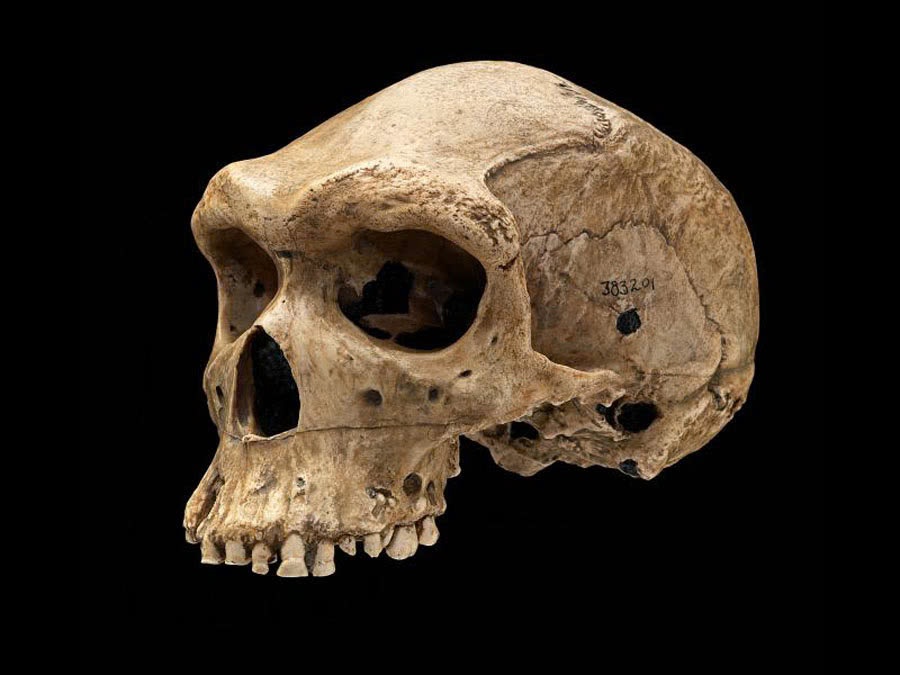In the early 20th century, a Swiss miner unearthed a truly extraordinary discovery in Kabwe, Zambia. Deep within a limestone cave lay a prehistoric skull, estimated to be between 125,000 and 300,000 years old. While its age alone made it a significant archaeological find, what truly captured global attention was a peculiar feature of the skull—a small, circular hole on one side, eerily reminiscent of a modern bullet wound. This unusual characteristic would ignite decades of debate and speculation, challenging conventional understanding of prehistoric humanity.
The Kabwe Skull: A Classification Conundrum
Initially, scientists classified the Kabwe skull as belonging to a new hominid species, which they named Homo rhodesiensis. This classification, however, has been a subject of considerable debate within the scientific community. Over time, advancements in research and genetic analysis have prompted scholars to reconsider this initial categorization. Many now believe that the Kabwe skull may represent a blend of traits resulting from interbreeding among various hominid species, including Homo erectus, Homo neanderthalensis, and early modern humans, or Homo sapiens.

This blending of characteristics reflects the complex and interconnected evolutionary pathways of ancient hominids. As researchers continue to study the Kabwe skull, it provides invaluable insights into the shared lineage of our ancient ancestors, further illustrating the intricacies of human evolution.
The Mysterious Hole: Beyond Ancient Weaponry
What sets the Kabwe skull apart is not only its historical and evolutionary significance but also the mysterious hole on its side. Forensic investigations into this feature have ruled out the possibility of it being caused by primitive weapons such as spears or arrows. These tools, while effective in their time, typically create radial fractures around the point of impact due to their lower velocity. However, the Kabwe skull’s hole is clean and circular, with no surrounding fractures—a detail that has perplexed experts for decades. The high-velocity nature of the damage appears to resemble the effects of a modern bullet.
This discovery poses an intriguing question: how could such a high-velocity injury occur in an era long before the advent of firearms? The absence of clear answers has only deepened the mystery, leaving scientists and historians to speculate about potential explanations.
A Parallel Mystery in Siberia
Adding to the intrigue, a similar discovery was made thousands of miles away in Siberia, near Russia’s Lena River. Archaeologists unearthed the skull of an auroch, an extinct species of wild cattle. Remarkably, this skull also featured a clean, round hole without the radial fractures typically associated with low-velocity impacts. The uncanny resemblance between the injuries on the Kabwe skull and the Siberian auroch’s skull has fueled speculation about their potential connection.
Theories and Speculations
The striking similarities between these two ancient skulls have sparked a wide range of theories, some grounded in scientific reasoning and others venturing into the realm of speculation. Among the proposed explanations are:
- Trans-temporal hunting expeditions: A controversial and highly speculative idea suggests that advanced civilizations from the future may have traveled back in time, leaving behind evidence of their presence.
- Impacts from meteorite shrapnel: Some scientists propose that small, high-velocity fragments from meteorites could have caused the damage, although the precision and similarity of the holes challenge this theory.
- Advanced ancient civilizations: Another hypothesis suggests that prehistoric societies may have developed advanced technologies now lost to history, capable of producing high-velocity projectiles.
- Pathological causes: Some researchers argue that the holes could result from natural causes such as infections or diseases that eroded the bone, although this does not account for the clean and precise nature of the injuries.
The Ongoing Enigma
Despite the numerous theories proposed over the years, none have provided conclusive evidence to solve the mystery of these ancient skulls. The Kabwe skull and its Siberian counterpart remain enigmas, challenging modern understanding of ancient history and the potential for advanced technologies or natural phenomena that defy contemporary explanations.
As researchers delve deeper into these cases, they encounter more questions than answers. Could there have been unknown natural forces or events capable of creating such precise injuries? Might there be evidence of advanced prehistoric societies that we have yet to uncover? Or are these injuries the result of entirely unknown phenomena?
A Window into the Past’s Untold Secrets
The Kabwe skull and its Siberian counterpart remind us of the vast expanse of Earth’s history and the countless secrets still hidden within it. These discoveries underscore the importance of continued exploration and research in archaeology and anthropology. Each find, no matter how puzzling, adds a piece to the intricate puzzle of humanity’s past.
For future generations of scientists and explorers, these enigmatic skulls serve as a call to remain curious and persistent in the pursuit of knowledge. The mysteries they represent may not be solved within our lifetimes, but they inspire a sense of wonder and a drive to uncover the unknown. As we continue to push the boundaries of scientific understanding, these ancient artifacts stand as symbols of humanity’s enduring quest to understand its origins and the forces that have shaped our world.





